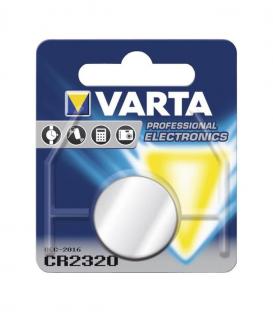Batteries alkaline button cell battery store

Batteries are devices that store and release electrical energy through chemical reactions. They consist of one or more electrochemical cells, each composed of two electrodes (anode and cathode) separated by an electrolyte. When a battery is connected to an external circuit, chemical reactions occur at the electrodes, generating a flow of electrons that can be harnessed to power electronic devices.
Alkaline Batteries:
Alkaline batteries are a type of primary (non-rechargeable) battery known for their use of an alkaline electrolyte, typically a potassium hydroxide solution. They consist of a zinc anode and a manganese dioxide cathode separated by the electrolyte. Alkaline batteries come in various sizes (such as AA, AAA, C, D) and are widely used in consumer electronics due to their energy density and relatively long shelf life.
Explanation of Battery Operation: During discharge, the zinc anode undergoes oxidation, releasing electrons and forming zinc oxide. Simultaneously, the manganese dioxide cathode reduces, creating water and manganese oxide. This chemical reaction generates electrical energy that can power devices.
Benefits:
- Energy Density: Alkaline batteries have a relatively high energy density, providing a substantial amount of power in a compact form.
- Long Shelf Life: Alkaline batteries can retain a significant portion of their charge even after several years of storage.
- Cost-Effective: Alkaline batteries are affordable and readily available, making them a practical choice for various applications.
- Versatility: They can power a wide range of devices, from low-drain to moderate-drain electronics.
Areas of Applications:
- Remote Controls: Alkaline batteries power TV remotes, air conditioning remotes, and other handheld controllers.
- Flashlights: These batteries provide illumination for emergency situations and outdoor activities.
- Toys and Games: Many electronic toys, game controllers, and remote-controlled vehicles use alkaline batteries.
- Clocks and Watches: Alkaline batteries help keep time in both analog and digital clocks and watches.
- Smoke Detectors: Alkaline batteries are often used to ensure continuous operation of smoke alarms.
- Portable Radios: Battery-operated radios rely on alkaline batteries for convenient use.
- Kitchen Gadgets: Devices like kitchen scales, digital thermometers, and handheld mixers can be powered by alkaline batteries.
- Wireless Doorbells: Alkaline batteries provide power for wireless doorbell systems.
- Low-Power Electronics: Alkaline batteries can be used in various low-power gadgets like calculators and small weather stations.
Button (Coin Cell) Batteries:
Detailed Description: Button batteries, also known as coin cell batteries, are small, flat, and round non-rechargeable batteries. They are used in compact devices that require minimal power due to their small size and low energy capacity. Button batteries are available in various chemistries, including alkaline, silver oxide, and lithium.
Explanation of Battery Operation: Button batteries operate on similar principles to other batteries. They consist of an anode, cathode, and electrolyte. Chemical reactions occur at the electrodes, producing an electric current.
Benefits:
- Compact Size: Button batteries are very small and can fit in tight spaces, making them suitable for tiny devices.
- Long Shelf Life: Like alkaline batteries, certain types of button batteries have a long shelf life.
- Low Self-Discharge: Some button battery chemistries have low self-discharge rates, allowing them to hold a charge for a long time when not in use.
Areas of Applications:
- Watches and Clocks: Button batteries are commonly used in both analog and digital watches, as well as wall and desk clocks.
- Calculators: Many handheld calculators use button batteries for power.
- Hearing Aids: Button batteries, specifically zinc-air cells, are commonly used in hearing aids due to their small size and energy output.
- Medical Devices: Button batteries are used in various medical devices, such as glucometers and blood pressure monitors.
- Remote Key Fobs: Button batteries power keyless entry remote fobs for vehicles and other devices.
- Small Electronics: Devices like digital thermometers, laser pointers, and small electronic gadgets often rely on button batteries.
It's important to note that while non-rechargeable batteries like alkaline and button batteries are widely used and convenient, proper disposal and recycling are essential to minimize their environmental impact and prevent potential hazards.
Browse our "Batteries" collection
Batteries: Alkaline & Button Cell Battery Store
- 14,30 €Power up your devices with the 2CR11108 Lithium Battery - 6V, 170mAh. Reliable energy for your electronics.
- 3,98 €Power up your devices with our long-lasting Battery 6LR61 alkaline 9V. Reliable energy source for all your electronic...
- 4,19 €Discover the power of Battery Basic DBD D - reliable energy for all your devices. Shop Batteries now for long-lasting...
- 2,81 €Power up your devices with our Battery Longlife 4106 AA. Enjoy long-lasting energy in this Blister of 4 pack. Ideal...
- 3,55 €Discover the power of Battery Longlife Extra 4114 C for extended performance. Energize your devices with this...
- 4,21 €Power up your devices with Battery Longlife Extra 4120 D. Enjoy extended usage with this blister pack of 2 batteries,...
- 1,66 €Power up your devices with the Battery Longlife Extra 4122 9V. Enjoy extended battery life for all your electronic...
- 3,04 €Discover the ultimate power solution with Battery Longlife Power 4903 AAA. Energize your devices for longer-lasting...
- 3,04 €Discover the power of Battery Longlife Power 4906 AA, delivering long-lasting energy for all your devices. Energize...
- 2,94 €Enhance your devices with Battery Longlife Power 4914 C. Get a blister of 2 for extended usage. Reliable energy...
- 5,33 €Enhance your devices with Battery Longlife Power 4920 D. Enjoy extended power in this blister of 2 batteries for...
- 3,12 €Discover the power of Battery Longlife Power 4922 9V. Energize your devices with long-lasting performance and...
- 4,50 €Power up your devices with the Battery Plus Power DP4.5V battery - reliable energy for all your needs.
- 4,50 €Enhance your devices with Battery Plus Power DPC C blister of 2. Reliable energy for all your needs. Upgrade now!
- 4,50 €Discover the ultimate power solution with Battery Plus Power DPD D. Maximize performance and reliability with this...
- 1,09 €Experience long-lasting power with the Battery Superlife 2006 AA. Trust in reliable performance for all your...
- 1,17 €Discover the power of Battery Superlife 2022 9V for long-lasting energy. Energize your devices with this...
- 1,17 €Discover the long-lasting power of Battery Superlife C Baby 2014. Get a blister pack of 2 for reliable energy...
- 1,85 €Enhance your devices with Battery Superlife D 2020, a powerful blister of 2 batteries. Maximize performance and...
- 10,18 € 14,54 €Discover the ultimate Battery Tester with LCD for accurate power checks. Ensure your batteries are always ready to go...
- 5,23 €Discover the power of Battery Ultra Power DUP9V 9V for long-lasting energy. Ideal for all your electronic devices,...
- 5,23 €Discover the ultimate power solution with Battery Ultra Power DUPC C. Energize your devices effortlessly with...
- 5,23 €Discover the ultimate power with Battery Ultra Power DUPD D. Energize your devices effortlessly with this...
- 2,43 €Power up your devices with the CR1216 Lithium 3V battery - reliable, long-lasting energy for all your electronic needs.
- 2,40 €Power up your devices with the CR1220 Lithium 3V battery - long-lasting energy for all your needs.
- 4,48 €Power up your devices with the CR1225 Lithium 3V battery. Reliable and long-lasting, this 48mAh powerhouse is perfect...
- 2,24 €Power up your devices with the CR1616 Lithium 3V battery. Long-lasting and reliable, this 55mAh powerhouse is perfect...
- 2,88 €Power up your devices with the CR1620 Lithium 3V battery. Reliable and long-lasting, this 70mAh cell is perfect for...
- 2,47 €Power up your devices with the CR1620 Lithium 3V battery. Reliable and long-lasting, this 75mAh powerhouse is perfect...
- 3,71 €Power up your devices with the CR1632 Lithium 3V battery - long-lasting energy for all your needs. Shop now for...
- 0,86 €Power up your devices with the CR2016 Lithium 3V battery - long-lasting energy for all your electronics.
- 0,86 €Power up your devices with the CR2025 Lithium 3V battery - long-lasting energy for all your electronic needs. Shop...
- 0,86 €Power up your devices with the CR2032 Lithium 3V battery - long-lasting energy for all your electronics.
- 2,56 €Power up your devices with the CR2320 Lithium 3V battery - long-lasting energy for all your electronic needs.
- 2,60 €Power up your devices with the CR2430 Lithium 3V battery - long-lasting, reliable energy for all your electronic needs.
- 4,09 €Power up your devices with the CR2450 Lithium 3V battery - long-lasting, reliable energy for all your needs.
- 1,51 €Power up your devices with our LR03 AAA alkaline 1.5V battery. Long-lasting energy for all your electronics needs....
- 4,50 €Power up your devices with LR03 AAA alkaline batteries. Reliable 1.5V power in a convenient pack of 4 pieces for...
- 3,33 €Power up your devices with the LR03 AAA alkaline 1.5V Max Tech battery - reliable energy for all your electronics.
- 3,46 €Power up your devices with the LR03 AAA alkaline 1.5V Turbo battery - long-lasting energy for all your electronics...
- 4,41 €Power up your devices with the LR1 N Lady Alkaline 1.5V battery - long-lasting energy for all your needs. Ideal for...
- 2,99 €Power up your devices with the LR1130 Alkaline 1.5V battery - long-lasting energy for all your needs.
- 3,98 €Power up your baby's toys with LR14 C Baby alkaline 1.5V batteries. Long-lasting energy for endless playtime fun!
- 3,48 €Power up your devices with the LR6 AA alkaline 1.5V Max Tech battery - long-lasting energy for all your electronics...
- 5,33 €Discover the power of PR10 1.4V 75mAh hearing aid batteries for long-lasting performance and reliability. Keep your...
- 5,33 €Discover the power of PR13 1.4V 300mAh hearing aid batteries for long-lasting performance and reliability. Keep your...
- 5,33 €Discover the power of PR675 1.4V batteries for hearing aids. Long-lasting 605mAh capacity ensures reliable...
- 2,83 €Discover the power of SR44 Silver Oxide 1.55V Batteries - long-lasting energy for your devices. Energize your...






















































